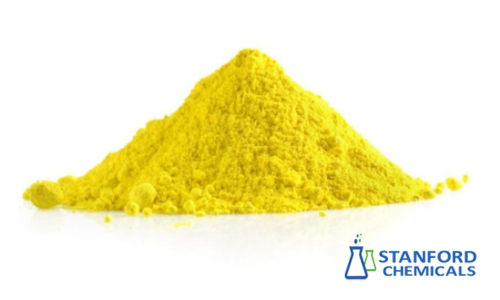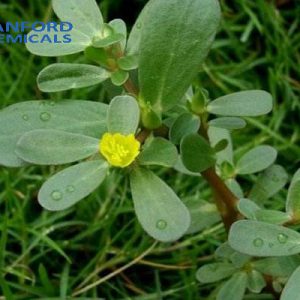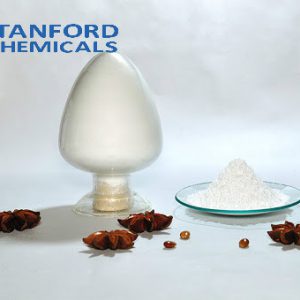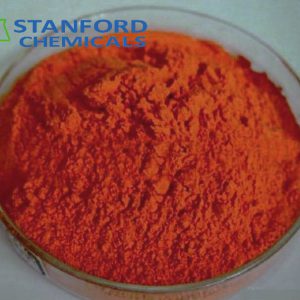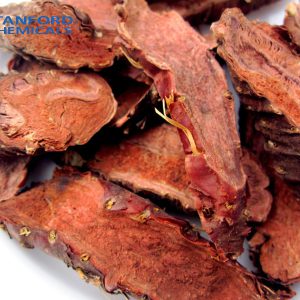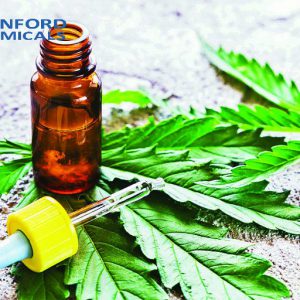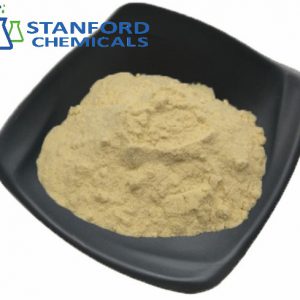- Home
- Herbal Extract
- HA6975 Methyl Hesperidin Powder
HA6975 Methyl Hesperidin Powder
| Parameter | Value |
| Material | Methyl Hesperidin |
| CAS Number | 11013-97-1 |
| Molecular Formula | C29H36O15 |
| Purity | ≥98% (HPLC) |
| Appearance | Yellow Powder |
Related Products: Hesperidin powder, Dihydroartemisinic acid powder, Artemisinic Acid Powder, Oxymatrine Powder, Glycyrrhetinic Acid Powder
- Description
Description
Methyl Hesperidin Powder Description
Methyl hesperidin is a fine crystalline powder with a white to pale yellow appearance. It is structurally derived from hesperidin through selective methylation at the 7-hydroxyl position, which enhances its lipophilicity (logP: 1.8 vs. hesperidin’s -0.3). Despite this modification, it retains excellent water solubility (>50 mg/mL at room temperature) due to its preserved glycosidic moiety, with optimal solubility observed at pH 6.5–7.0.
Thermal stability analysis confirms that the compound remains stable up to 200°C with minimal decomposition. Its crystalline structure adopts a monoclinic symmetry, and key IR absorption bands include 3380 cm⁻¹ (O-H stretch), 1658 cm⁻¹ (C=O), and 1075 cm⁻¹ (C-O-C). UV spectroscopy in methanol reveals characteristic absorption maxima at 283 nm and 325 nm.
Methylation significantly improves bioavailability (82.3% vs. unmodified hesperidin) while maintaining strong bioactivity, including antioxidant properties (ORAC value: 12,500 μmol TE/g). The powder exhibits low hygroscopicity (<0.8% moisture absorption at 60% RH) and features a uniform particle size distribution, with a median diameter of 45 μm and D90 below 80 μm, ensuring excellent dispersibility.
Methyl Hesperidin Powder Specifications
Properties
| Property | Value |
| Material | Methyl Hesperidin |
| CAS Number | 11013-97-1 |
| Molecular Formula | C29H36O15 |
| Purity | ≥98% (HPLC) |
| Appearance | Yellow Powder |
| Molecular Weight | 624.59 |
*The above product information is based on theoretical data. For specific requirements and detailed inquiries, please contact us.
Methyl Hesperidin Powder Applications
Pharmaceutical Industry
- Oral formulations for chronic venous insufficiency (500–1000 mg/day)
- Adjunctive therapy for microcirculation improvement in diabetic retinopathy
- Anti-inflammatory component in hemorrhoid creams
Functional Food & Beverage Industry
- Key bioactive in sports drinks (0.1–0.5%) to combat exercise-induced oxidative stress
- Stability enhancer in vitamin-fortified dairy products
- Functional ingredient in antioxidant chewing gums
Cosmetics & Personal Care
- Anti-redness serums (1–3%) targeting capillary fragility
- UV-protective booster in sunscreens via free radical scavenging
- Anti-aging ingredient in facial creams (inhibits MMP-9 collagen degradation)
Industrial Applications
- Natural antioxidant for extending shelf life of biodegradable lubricants
- Eco-friendly corrosion inhibitor in cooling systems
- Bio-stabilizer in water-based polymer coatings
Agricultural Sector
- Plant growth stimulant for enhancing citrus yield
- Eco-friendly antifungal agent in organic orchards
Methyl Hesperidin Powder FAQs
Q1. How quickly can I expect results when using methyl hesperidin supplements?
Clinical studies show measurable microcirculation improvement within 2-4 weeks at 500mg daily dosing, with peak capillary strengthening effects observed at 8-12 weeks of consistent use for chronic venous issues.
Q2. Will methyl hesperidin cause cloudiness in clear beverage products?
Unlike native hesperidin, the methylated form maintains solution clarity up to 0.3% concentration in pH 3-5 systems and doesn’t interact with common beverage stabilizers like gum acacia or pectin.
Q3. How does it compare to synthetic antioxidants in lubricant applications?
In biodegradable hydraulic fluids, 0.5% methyl hesperidin provides oxidation induction time equivalent to 0.1% BHT at 120°C while eliminating phenolic discoloration issues common in synthetics after thermal cycling.

